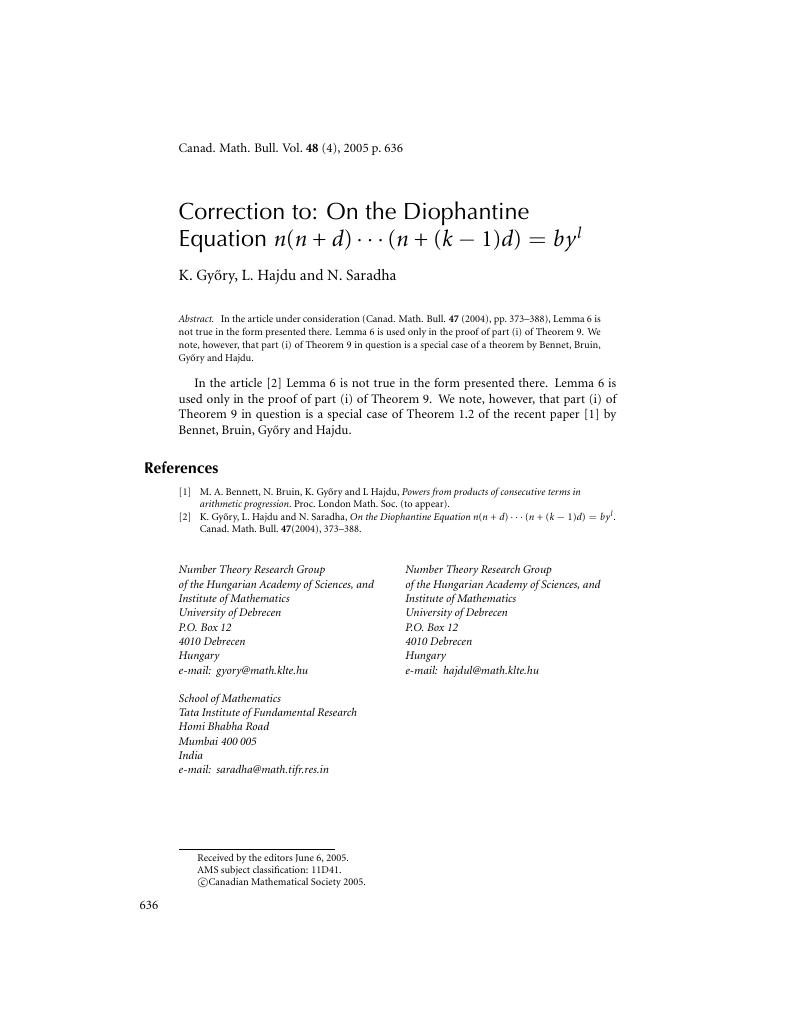No CrossRef data available.
Article contents
Correction to: On the Diophantine Equation n(n + d) · · · (n + (k – 1)d) = byl
Published online by Cambridge University Press: 20 November 2018
Abstract
An abstract is not available for this content so a preview has been provided. As you have access to this content, a full PDF is available via the ‘Save PDF’ action button.

Keywords
Information
- Type
- Correction
- Information
- Copyright
- Copyright © Canadian Mathematical Society 2005
References
[1] Bennett, M. A., Bruin, N., Győry, K. and Hajdu, L., Powers from products of consecutive terms in arithmetic progression. Proc. LondonMath. Soc. (to appear).Google Scholar
[2] Győry, K., Hajdu, L. and Saradha, N., On the Diophantine Equation n(n + d) · · · (n + (k – 1)d) = byl
. Canad. Math. Bull.
47(2004), 373–388.Google Scholar

